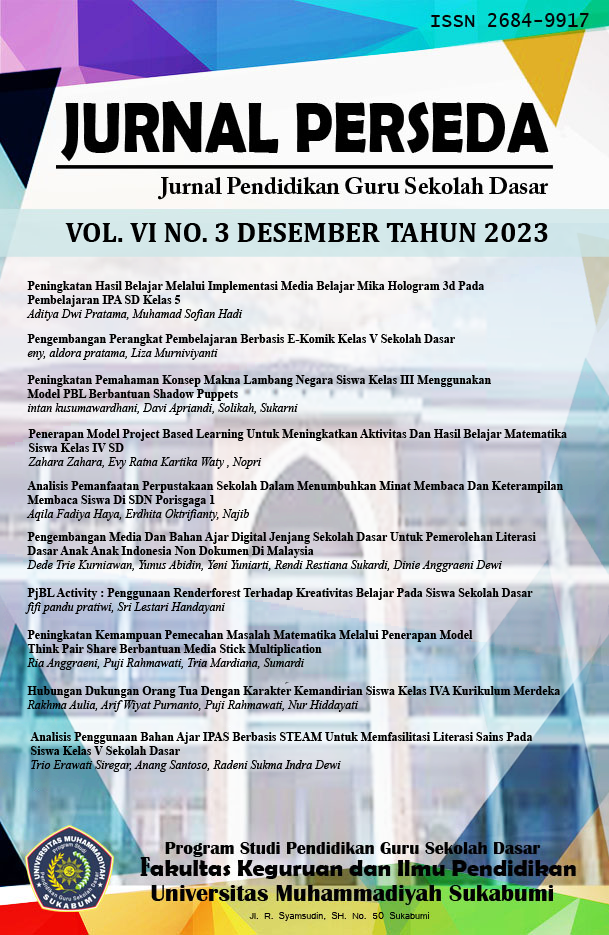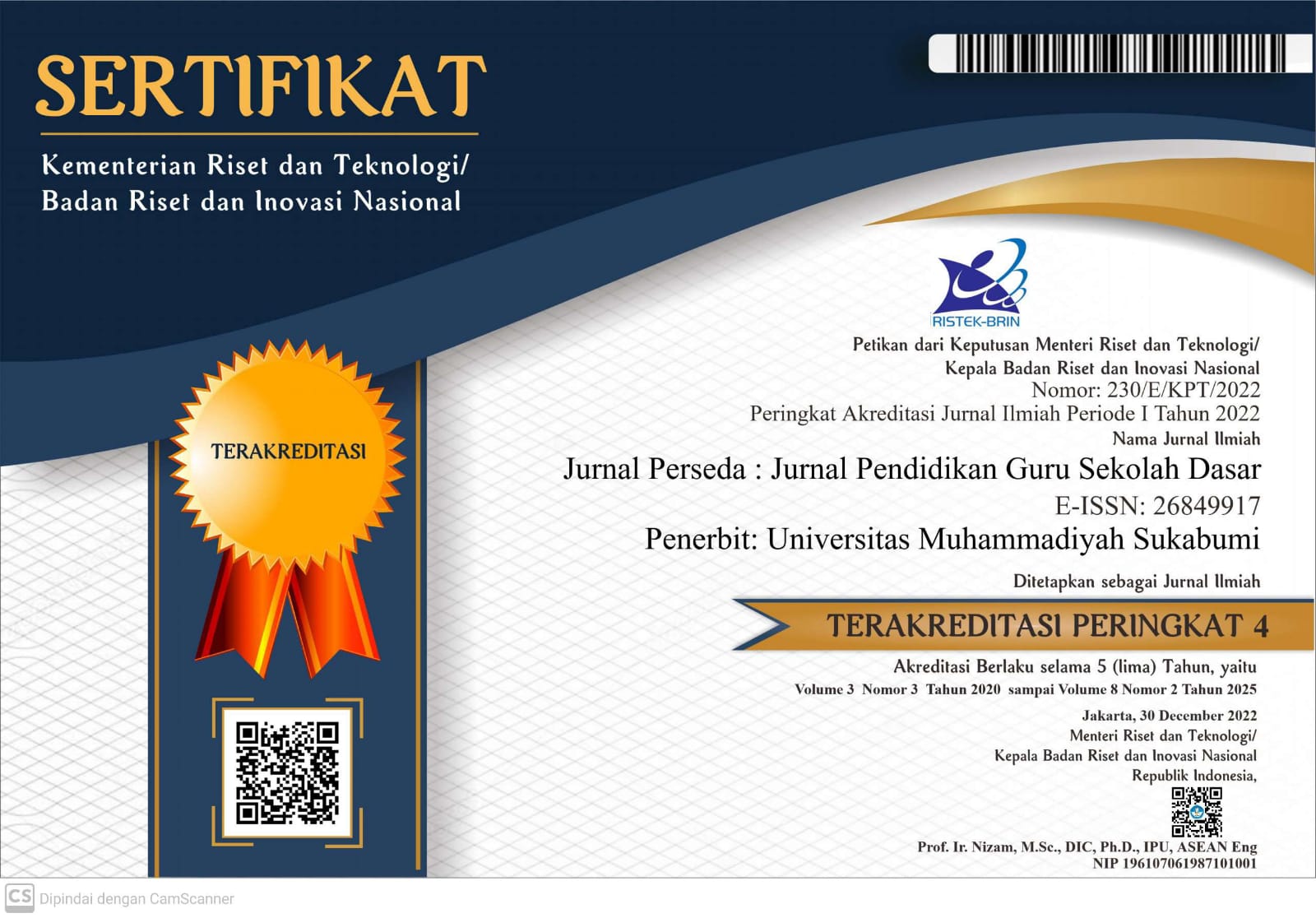PjBL Activity : Penggunaan Renderforest Terhadap Kreativitas Belajar Pada Siswa Sekolah Dasar
DOI:
https://doi.org/10.37150/perseda.v6i3.2255Abstract
In one of the elementary schools in Jatinegara, fifth-grade students became the subjects of this research to investigate whether students' learning creativity can be influenced by Project-Based Learning activities using Renderforest. This research employs the Renderforest program to examine the innovative use of science and technology by elementary school students through Project-Based Learning (PjBL) activities in Grade 5. The researchers use quantitative experimental techniques and can employ quasi-experimental methods with a posttest-only nonequivalent design. All fifth-grade students constitute the research sample and are divided into three classes, namely Class VA (consisting of 27 students), Class VB (consisting of 31 students), and Class VC (consisting of 29 students). The total number of students in Grade 5 is 87. The research sample size is based on two classes: VC (with 29 students as the experimental group) and VA (with 27 students as the control group). The students' creativity level in the classroom is measured through observation instruments and questionnaires. The research data is collected as numerical data using mathematical computations, such as tests of normality, homogeneity, and hypothesis testing. These techniques are employed to analyze the data in this research. The results of the independent sample t-test for observation indicate that the calculated t-value is greater than the tabulated t-value, with a significance level of 5% (10.292 > 2.004). Furthermore, in the questionnaire, the obtained t-value is greater than the tabulated t-value using the Independent Samples t-test at a significance level of 5% (11.254 > 2.004). It can be concluded that there is a statistically significant difference between the experimental and control groups in terms of student creativity, based on the results of both observation and questionnaire, as H1 is accepted, and the significance values for both instruments are 0.000 < 0.05.








